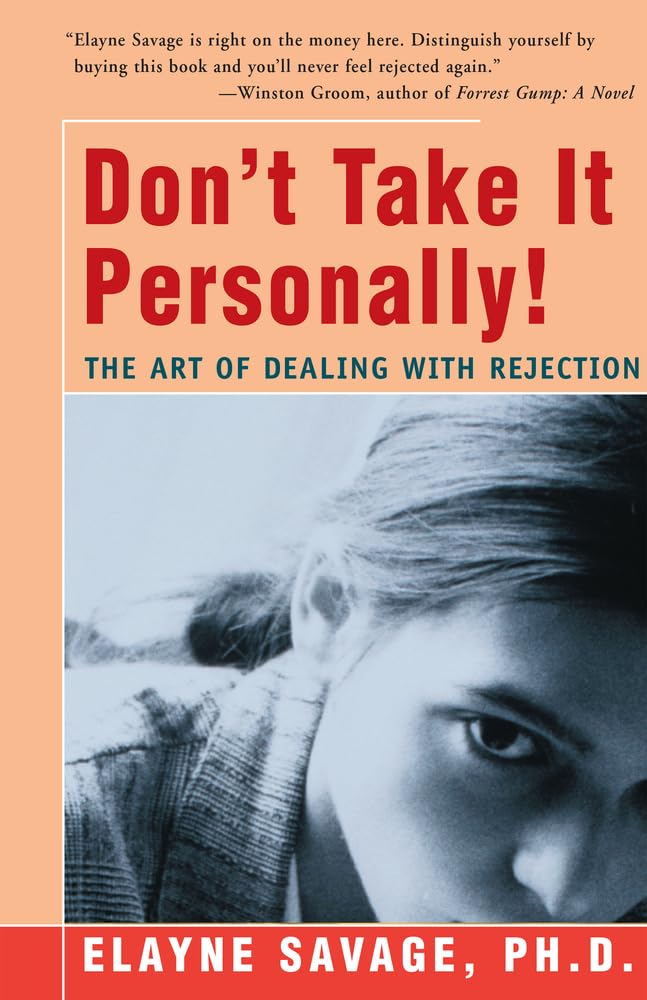I, too, found myself remembering a long-forgotten scary experience that happened soon after my graduation from college. Now I remember having to muster the strength to push and kick a very large someone away from me. At the time I weighed just under 100 pounds. He was someone I thought of as a friend –– until themoment that he tried to overpower me.
I have not remembered this surreal experience in all these years –– until Dr. Ford vividly described how his hand over her mouth to prevent her from screaming caused her to think she might stop breathing and die. Yes, I recognize that feeling.
I, too, developed ongoing fear of being unable to escape my surroundings. I like to carefully choose where I will sit in restaurants and theaters. I don’t like to shop in crowded stores with narrow aisles. Although my fear used to be pretty debilitating, over the years I’ve learned to handle it better — at least most of the time.
Trouble is, I never know when those old memories or fears might pop up again. That’s what hidden memories can do — lie more or less dormant until something happens that reminds us of the early traumatic experience.
We’re hearing how Dr. Ford’s testimony is eliciting hidden memories for lots of folks. Did you know the National Sexual Assault Telephone Hotline reports a 338 percent increase in traffic the 3 days following the hearing? And on Friday alone, the day after Dr. Ford told her story, they saw 3,000 calls.
Here’s How Traumatic Memory Works
There has been much curiosity from my clients regarding traumatic memory since Dr. Ford’s testimony and her description about how the hippocampus records, stores and processes trauma.
In previous blogs I’ve focused on how the brain takes snapshots and encodes certain aspects of what is happening in the moment, for example during a physical or sexual assault. These images may include the placement of furniture in the room, touch, smells and sounds. I often hear clients describe a ticking clock. And many describe not being able to breathe because a hand is over a mouth.
And the stress hormones come into play. Adrenaline, norepinephrine and cortisol are activated by the amygdala and result in fight, flight or freeze reactions.
These central (survival) details are imprinted, encoded and put into life-long storage in the neural pathway. Each new fear-inducing traumatic situation can bring on a kind of PTSD – with renewed spurts of the stress hormones during a new experience, often repeating over the course of our lives
Many times we don’t even exactly know what sets it off, but there it is.
According to neuroscience the human brain processes, files and stores memories that are linked to strong emotions. The amygdala is the processing center for emotional responses. During a traumatic event it screens the information your five senses take in.
Think of it this way: The amygdala time-and-date stamps certain sounds, sights, smells, tastes, and touch and stores it for safe-keeping and the hippocampus is the brain’s memory filing system.
When certain powerful memories are triggered by a specific cue there may be an emotional or body reaction. Often we don’t realize what prompts us to get so upset and upon reflection it turns out to be some kind of stored memory,
Why Are Some Memories Vivid and Some Are Hazy
or Non-existent?
Here’s the puzzling part for many of us: while certain aspects of the trauma are imprinted on our brain often for the rest of our lives, other aspects may be fuzzy or not remembered at all.
We tend to remember the essential, central, survival details, and the peripheral details get filtered out by the brain’s filing system – the hippocampus.
So yes, looking at it from a neuroscience perspective, it makes sense that Dr. Ford may not remember the day or date or address of the assault she experienced. Yet she can vividly feel being pushed into the room, notice where the bed is positioned in the room, hear the sound of loud music and their laughter and feel the weight of his body on hers, and his hand over her mouth. It must have been surreal disconcerting for her – as it was for me – to realize the person who is assaulting you is someone you know and trust.
In my work as a Child Protective Services Social Worker, trainer of therapists, and practicing psychotherapist focusing on childhood and adult trauma, I have often encountered the complex workings of the brain in processing traumatic events. And as you can tell from the description of my own experiences above, personally as well.
It can be immensely upsetting when seemingly out of nowhere there is an unexpected return of the kind of anxiety and panic which had been experienced during the original event. A name, a smell, a familiar sight can cause the re-experienced memory.
It can be disconcerting, confusing, frightening and overwhelming. We find ourselves back in the fight, flight or freeze mode and those stress hormones kick in again, causing similar anxiety to the original traumatic experience.
Fortunately there are ways to deal with these memory intrusions:
I’m a big believer in identifying and putting words to the messages we take in from the original trauma – having to do how we view our world, the safety of our world and the people in it.
And I’m a fan of using ways to reprogram the neural pathways:
Neuroplasticity, EMDR and Emotional Freedom Technique (EFT)
are not therapy, but they provide tools to use.
Other Kinds of Images
For 27 years I’ve been getting weirded out whenever I hear Justice Clarence Thomas’ name or catch a glimpse of him in his black robes. I think about his confirmation hearings and Anita Hill telling the Senators how he asked her: “Who has put pubic hair on my Coke?” My brain seems to have filed those words away.
And I can’t help but think about an image of Judge Kavanaugh with his pants down as described by Yale classmate Deborah Ramirez. If he is elevated to the Supreme Court I just may continue to have the that image of him waving his penis at her.
Maybe if I’m lucky my hippocampus and amygdala can work in tandem to block out that yucky image forever.
I am wondering if back in those bad ole beer-drinking days someone might have nicknamed him “Bad Brett Kavanaughty.”
I just offered you an overview about how traumatic experiences are processed by the brain.
The links below are some useful articles which can probably answer other questions you may have:
How Trauma Affects Memory
https://www.npr.org/sections/health-shots/2018/09/28/652524372/how-trauma-affects-memory-scientists-weigh-in-on-the-kavanaugh-hearing
https://theconversation.com/memories-of-trauma-are-unique-because-of-how-brains-and-bodies-respond-to-threat-103725
https://www.wisegeek.com/what-is-the-relationship-between-the-amygdala-and-hippocampus.htm
How Memories Are Affected by Anniversary Reactions:
https://www.huffingtonpost.com/matthew-d-erlich-md/grief_b_1164254.html
http://www.tipsfromthequeenofrejection.com/2013/08/my-mother-my-daughter-myself-and-a-powerful-anniversary-reaction.html
About the Difference Between Central vs. Peripheral Memory Details
https://beta.nbcnews.com/think/opinion/christine-blasey-ford-s-memories-brett-kavanaugh-are-30-years-ncna913511
Leonard Pitt, Jr responding to Congressional Candidate Gina Sosa's comment: “What boy hasn’t done this in high school?”
Read more here: https://www.miamiherald.com/opinion/opn-columns-blogs/leonard-pitts-jr/article218995800.html#storylink=cpy
https://www.miamiherald.com/opinion/opn-columns-blogs/leonard-pitts-jr/article218995800.html
© Elayne Savage, PhD
Until next month,
Or call 800.656.HOPE (4673) to be connected with a trained staff member from a sexual assault service provider in your area.
Elayne Savage is the author of ground-breaking relationship books published in 9 languages.
Both books are now available on Kindle!
To order DON'T TAKE IT PERSONALLY! THE ART OF DEALING WITH REJECTION
To order BREATHING ROOM — CREATING SPACE TO BE A COUPLE
REPRINTING THESE BLOGS
You can use the articles in 'Tips from The Queen of Rejection'® as long as you include an attribution and, whenever possible, a live link to my website. I'd appreciate if you'd notify me where and when the material will appear.
The attribution should include this information: Elayne Savage, PhD is a communication coach, keynote speaker, and trainer, practicing psychotherapist and author of Don't Take It Personally! The Art of Dealing with Rejection and Breathing Room – Creating Space to Be a Couple.
To find out more about my speaking programs, coaching and consultation services visit: //www.QueenofRejection.com or call 510-540-6230 if you or your group can benefit.
Contacting Elayne
I welcome your feedback as well as suggestions for topics you'd like to see addressed in this e-letter.
Here's how you can reach me:
510-540-6230
www.QueenofRejection.com
For more communication and rejection tips, you can follow me:
Twitter@ElayneSavage
LinkedIn.com/in/elaynesavage
Facebook.com/elayne.savage
To find out more about my speaking programs, coaching and consultation services visit: //www.QueenofRejection.com or call 510-540-6230 if you or your group can benefit.
Contacting Elayne
I welcome your feedback as well as suggestions for topics you'd like to see addressed in this e-letter.
Here's how you can reach me:
510-540-6230
www.QueenofRejection.com
For more communication and rejection tips, you can follow me:
Twitter@ElayneSavage
LinkedIn.com/in/elaynesavage
Facebook.com/elayne.savage


Leave a Reply